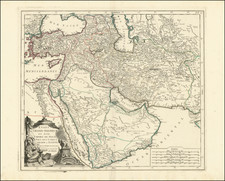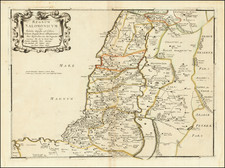Old Testament Teachings
A leaf from Hartmann Schedal's monumental Nuremberg Chronicle, officially titled Liber Chronicarum, which told the history of the Christian world from Biblical beginnings to the 1490s. This sheet features engravings for two Biblical stories of the Old Testament. The first image depicts Moses removing his shoes before speaking to God in the form of the Burning Bush. The second engraving is an illustration of brothers Nadab and Abihu burning alive as a censer spews holy fire at them.
The most intriguing aspect of this piece is how figures are represented by Schedal. God, Moses, Nadab, Abihu, and other figures are garbed in Western medieval style with flowing robes and antiquated headwear. Note the inclusion of figures connected by a flowering vine which Schedal used to illustrate kinship.
Latin text describes the scenes and their relationship to the overall story presented. The Nuremberg Chronicle was written as a history of Western civilization that combines Biblical canon with factual historical events. As such, the text is not simply a retelling of these stories, but also a wider explanation of how these stories impacted later history.
A very nice piece of one of the seminal books of the late 1400s. Just under 3,000 copies of the Nuremberg Chronicle are known to exist in collections. Here is Cambridge's digitized Latin edition of the Chronicle.
Hartmann Schedel (1440-1514) was a physician, book collector, and writer whose most famous work, the Liber Chronicarum (Nuremberg Chronicle), included some of the first printed views of many cities in Europe and across the world.
Schedel was born and died in Nuremberg, but he also traveled for his education. From 1456 to 1463 he lived in Leipzig, where he attended the University of Leipzig and earned his MA. From there he went to Padua, where he earned a Doctor of Medicine in 1466. After university, he worked for a time in Nördlingen and then returned to Nuremberg. In 1482 he was elected a member of the Great Council of Nuremberg.
The Chronicle was published in 1493. Besides this major work, one of Schedel’s most enduring legacies is his magnificent manuscript and printed book collection, one of the largest of the fifteenth century. In 1552, Schedel's grandson, Melchior Schedel, sold about 370 manuscripts and 600 printed works from Hartmann Schedel's library to Johann Jakob Fugger. Fugger later sold his library to Duke Albert V of Bavaria in 1571. This library is now mostly preserved in the Bayerische Staasbibliothek in Munich.
Among the surviving portions of Schedel's library are the records for the publication of the Chronicle, including Schedel's contract with Anton Koberger for the publication of the work and the financing of the work by Sebald Schreyer and Sebastian Kammermeister, as well as the contracts with Wohlgemut and Pleydenwurff for the original artworks and engravings. The collection also includes original manuscript copies of the work in Latin and German.









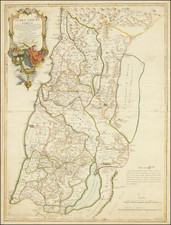
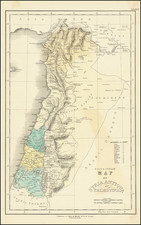
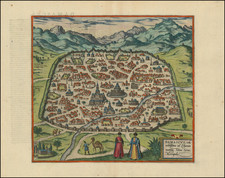
![[ Tribes of Zabulun Issachar, Manasseh ] Tribus Zabulon, Isachar, et, Dimidia Manasse altera, hoc est illae Terrae Sanctae regiones . . .](https://storage.googleapis.com/raremaps/img/small/95602.jpg)
